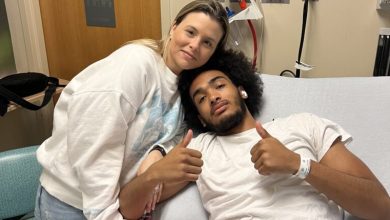6 Tell-Tale Signs of Eczema in Black Babies


Generally, most children with eczema are diagnosed before the age of five. However, depending on the symptoms, some children are diagnosed within a few weeks of birth. Since eczema can range from annoying to painful, it’s a good idea to get an early diagnosis so your baby can start a medication regimen. The skin condition can look different on Black babies, though, and knowing the signs can make a significant difference in their diagnosis time.
6 Signs of Eczema on Black Babies
- Swollen patches of skin – Inflammation is a characteristic of eczema and on Black skin, the swollen areas may appear gray, dark brown, or purple.
- Dry, itchy skin – The affected areas can be scaly as well and sometimes you may see some oozing.
- Thick, leathery patches – This is known as lichenification and the leathery patches are usually darker than the usual skin tone.
- Dark or light patches – Eczema can change the pigmentation of your baby’s skin, which can lead to light or dark patches. Darker skin is more likely to have dark patches, however.
- Small bumps on the torso – Also known as papular eczema, you may also see these small bumps on the limbs.
- Small bumps on hair follicles – This is also called follicular eczema and Black babies seem to be more prone to it than other ethnicities.
How it Changes Over Time
While the progression of a baby’s symptoms can vary, there are certain issues you can expect. From the age of zero to six months, eczema is more likely to affect the face than other parts of the body. You may see patches of inflamed skin on the baby’s cheeks, forehead, chin, and scalp. The affected areas may also ooze liquid but it’s not always a sign of an infection.
As they get older, however, they may develop irritated skin elsewhere because they’ve become more mobile. When they start to crawl, you’ll likely find inflamed areas on their elbows and knees. Since they’re moving around, there’s a higher risk of these irritated areas becoming infected when the skin is broken. If there is pus, you need to talk to your doctor about treating the infection.
RELATED: Foods to Avoid for Babies and Toddlers with Eczema
How to Take Care of Their Skin
The key to taking care of a baby with eczema is keeping their skin moisturized. In newborns and babies up to six months, your doctor may prescribe specialized products that will soothe the skin. When bathing your baby, you should only use slightly warm water and bathe them for no more than 15 minutes. It’s also best to apply moisturizer while their skin is still damp. Doctors recommend moisturizing twice per day.
If your doctor hasn’t prescribed skincare products for your baby then it’s good to use mild cleansers, fragrance-free creams, and petroleum jelly as a moisturizer.
Another aspect of caring for your baby’s sensitive skin is avoiding irritants. You should stay away from itchy fabrics and any clothes that don’t let your baby’s skin breathe. Using harsh soaps on your baby or their clothes may also result in flares.
RELATED: 5 Baby Skin Issues To Expect In The First Year
When to See the Doctor
If you notice that your baby has signs of eczema, you need to let their pediatrician know. Depending on the symptoms, they may treat it or refer you to a dermatologist. When getting this referral, make sure to ask for a doctor who has treated people of color for eczema. Doing this will make it less likely for your concerns to be dismissed or for your baby’s skin condition to be misdiagnosed.
Once your baby has been diagnosed, you may need to see a doctor on separate occasions. This can include worsening symptoms that indicate the medication is no longer effective and signs of an infection, which need antibiotics to be treated.
Any baby can develop eczema but studies show that Black babies are more likely to have the skin condition. If your baby is one of them, you must get them diagnosed so you can take care of them. You should talk to their pediatrician as soon as possible so you can settle on the way forward.




